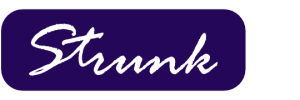Strunk’s Loan and Deposit Pricing Solution
Pricing commercial loans for community banks can be daunting especially in areas where they compete for loans with larger institutions. With a yield curve that has changed dramatically over the past 18 months, isn’t it time your senior commercial lender looked at a loan pricing solution?
Commercial lending comes all shapes and sizes and borrowers are more sophisticated now more than ever. What should the interest rate be? For what term? Is there a fee involved? Is the rate floating or fixed? And lastly, will the borrower keep deposits with the bank?
Loan pricing solutions have been used by larger institutions for years and community banks sometimes just “throw a dart” to see what a borrower will pay. Generally, costs associated with underwriting and servicing the loan is not considered since it is hard to determine what they are. With interest rates at historically high numbers (last 15 years) maybe community bankers should look for an affordable loan pricing program.
Strunk’s loan and relationship pricing solution is designed to model all types of commercial loans factoring in costs associated with the loan, pricing for risk, and providing a return that is satisfactory to the bank. The program takes into account deposits the borrower may have with the bank as well as other loans. Banks will typically see a 25-50bp increase in NIM after implementing Strunk’s solution.
The loan pricing model is easy to use and training the lending staff is paramount to getting buy-in for the solution. The goal is to increase net interest margin while also giving bankers a tool to understand why you may have lost a deal.
Does your bank consider the size of the deposit when pricing CD’s or money market accounts? Just like loans, size matters when it comes to deposits. Strunk’s loan and deposit pricing tool can make your bank a lot of money. Contact Strunk at 800.728.3116 or info@strunkaccess.com to see how it works.


